 |
by Scott J Mulligan on (#6TK5M)
Meta has released a new AI model that can translate speech from 101 different languages. It represents a step toward real-time, simultaneous interpretation, where words are translated as soon as they come out of someone's mouth. Typically, translation models for speech use a multistep approach. First they translate speech into text. Then they translate that...
|
MIT Technology Review
| Link | https://www.technologyreview.com/ |
| Feed | https://www.technologyreview.com/stories.rss |
| Updated | 2025-12-19 14:18 |
 |
by MIT Technology Review Insights on (#6TK27)
In the rapidly evolving landscape of digital innovation, staying adaptable isn't just a strategy-it's a survival skill. Everybody has a plan until they get punched in the face," says Luis Nino, digital manager for technology ventures and innovation at Chevron, quoting Mike Tyson. Drawing from a career that spans IT, HR, and infrastructure operations across...
|
 |
by Rhiannon Williams on (#6TJZ8)
This is today's edition ofThe Download,our weekday newsletter that provides a daily dose of what's going on in the world of technology. China wants to restore the sea with high-tech marine ranches A short ferry ride from the port city of Yantai, on the northeast coast of China, sits Genghai No. 1, a 12,000-metric-ton ring...
|
 |
by MIT Technology Review Insights on (#6TJCN)
Imagine the bustling floors of tomorrow's manufacturing plant: Robots, well-versed in multiple disciplines through adaptive AI education, work seamlessly and safely alongside human counterparts. These robots can transition effortlessly between tasks-from assembling intricate electronic components to handling complex machinery assembly. Each robot's unique education enables it to predict maintenance needs, optimize energy consumption, and innovate...
|
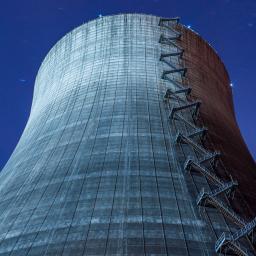 |
by Rhiannon Williams on (#6TJ3S)
This is today's edition ofThe Download,our weekday newsletter that provides a daily dose of what's going on in the world of technology. What's next for nuclear power While nuclear reactors have been generating power around the world for over 70 years, the current moment is one of potentially radical transformation for the technology. As electricity...
|
 |
by Casey Crownhart on (#6TJ1M)
MIT Technology Review's What's Next series looks across industries, trends, and technologies to give you a first look at the future. You can read the rest of themhere. While nuclear reactors have been generating power around the world for over 70 years, the current moment is one of potentially radical transformation for the technology. As...
|
 |
by James O'Donnell on (#6TJ1N)
This story originally appeared in The Algorithm, our weekly newsletter on AI. To get stories like this in your inbox first, sign up here. In December, our small but mighty AI reporting team was asked by our editors to make a prediction: What's coming next for AI? In 2024, AI contributed both to Nobel Prize-winning...
|
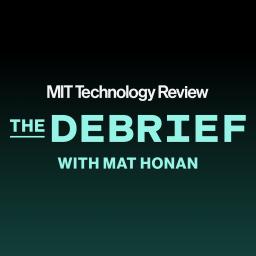 |
by Mat Honan on (#6THNF)
This article first appeared in The Debrief,MIT Technology Review'sweekly newsletter from our editor in chief Mat Honan. To receive it in your inbox every Friday, sign up here. On Tuesday last week, Meta CEO Mark Zuckerberg released a blog post and video titled More Speech and Fewer Mistakes." Zuckerberg-whose previous self-acknowledged mistakes includethe Cambridge Analytica...
|
 |
by Rhiannon Williams on (#6THBB)
This is today's edition ofThe Download,our weekday newsletter that provides a daily dose of what's going on in the world of technology. Inside the strange limbo facing millions of IVF embryos Millions of embryos created through IVF sit frozen in time, stored in cryopreservation tanks around the world. The number is only growing thanks to...
|
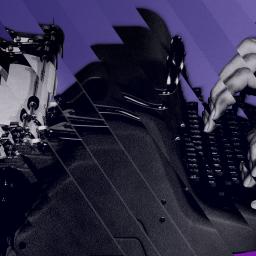 |
by Melissa Heikkilä, Will Douglas Heaven on (#6TG72)
Agents are the hottest thing in tech right now. Top firms from Google DeepMind to OpenAI to Anthropic are racing to augment large language models with the ability to carry out tasks by themselves. Known as agentic AI in industry jargon, such systems have fast become the new target of Silicon Valley buzz. Everyone from...
|
 |
by Rhiannon Williams on (#6TFJF)
This is today's edition ofThe Download,our weekday newsletter that provides a daily dose of what's going on in the world of technology. How the US is preparing for a potential bird flu pandemic This week marks a strange anniversary-it's five years since most of us first heard about a virus causing a mysterious pneumonia." A...
|
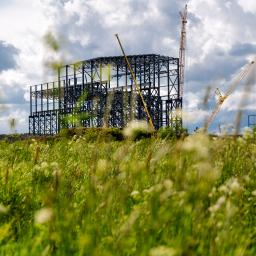 |
by Rhiannon Williams on (#6TEPH)
This is today's edition ofThe Download,our weekday newsletter that provides a daily dose of what's going on in the world of technology. The world's first industrial-scale plant for green steel promises a cleaner future As of 2023, nearly 2 billion metric tons of steel were being produced annually, enough to cover Manhattan in a layer...
|
 |
by Casey Crownhart on (#6TEMG)
This article is from The Spark, MIT Technology Review's weekly climate newsletter. To receive it in your inbox every Wednesday, sign up here. I love the fresh start that comes with a new year. And one thing adding a boost to my January is our newest list of 10 Breakthrough Technologies. In case you haven't...
|
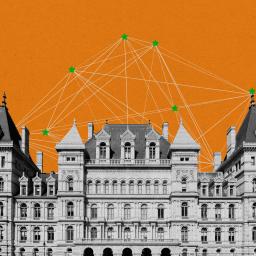 |
by Scott J Mulligan on (#6TEJK)
The first Democrat in New York history with a computer science background wants to revive some of the ideas behind the failed California AI safety bill, SB 1047, with a new version in his state that would regulate the most advanced AI models. It's called the RAISE Act, an acronym for Responsible AI Safety and...
|
 |
by Rhiannon Williams on (#6TDTW)
This is today's edition ofThe Download,our weekday newsletter that provides a daily dose of what's going on in the world of technology. What's next for AI in 2025 For the last couple of years we've had a go at predicting what's coming next in AI. A fool's game given how fast this industry moves. But...
|
 |
by James O'Donnell, Will Douglas Heaven, Melissa Heik on (#6TDPV)
MIT Technology Review's What's Next series looks across industries, trends, and technologies to give you a first look at the future. You can read the rest of themhere. For the last couple of years we've had a go at predicting what's coming next in AI. A fool's game given how fast this industry moves. But...
|
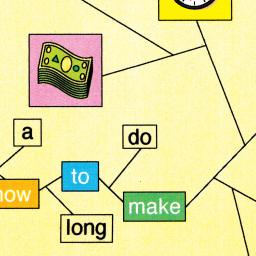 |
by Rhiannon Williams on (#6TCZG)
This is today's edition ofThe Download,our weekday newsletter that provides a daily dose of what's going on in the world of technology. AI means the end of internet search as we've known it We all know what it means, colloquially, to google something. You pop a few words in a search box and in return...
|
 |
by Eileen Guo on (#6TCTQ)
MIT Technology Review's What's Next series looks across industries, trends, and technologies to give you a first look at the future. You can read the rest of them here. Every day, we are tracked hundreds or even thousands of times across the digital world. Cookies and web trackers capture every website link that we click,...
|
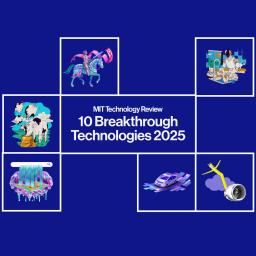 |
by James O'Donnell on (#6TCTP)
This story originally appeared in The Algorithm, our weekly newsletter on AI. To get stories like this in your inbox first, sign up here. The start of a new year, and maybe especially this one, feels like a good time for a gut check: How optimistic are you feeling about the future of technology? Our...
|
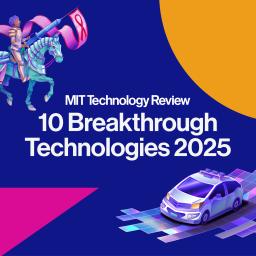 |
by Rhiannon Williams on (#6TC01)
This is today's edition ofThe Download,our weekday newsletter that provides a daily dose of what's going on in the world of technology. Introducing: MIT Technology Review's 10 Breakthrough Technologies for 2025 Each year, we spend months researching and discussing which technologies will make the cut for our 10 Breakthrough Technologies list. We try to highlight...
|
 |
by Mat Honan on (#6TBXC)
We all know what it means, colloquially, to google something. You pop a few relevant words in a search box and in return get a list of blue links to the most relevant results. Maybe some quick explanations up top. Maybe some maps or sports scores or a video. But fundamentally, it's just fetching information...
|
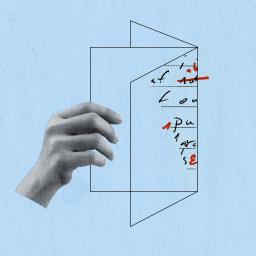 |
by Mat Honan on (#6TBXD)
Welcome to our annual breakthroughs issue. If you're an MIT Technology Review superfan, you may already know that putting together our 10 Breakthrough Technologies (TR10) list is one of my favorite things we do as a publication. We spend months researching and discussing which technologies will make the list. We try to highlight a mix...
|
 |
by MIT Technology Review on (#6TAK4)
Recorded on January 3, 2025 Unveiling the 10 Breakthrough Technologies of 2025 Speakers: Amy Nordrum, executive editor, and Charlotte Jee, news editor. Each year, MIT Technology Review publishes an annual list of the top ten breakthrough technologies that will have the greatest impact on how we live and work in the future. This year, the...
|
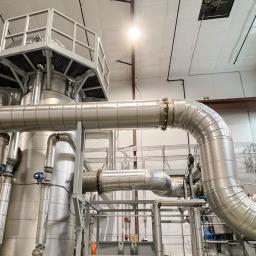 |
by Rhiannon Williams on (#6TAA3)
This is today's edition ofThe Download,our weekday newsletter that provides a daily dose of what's going on in the world of technology. How poop could help feed the planet A new industrial facility in suburban Seattle is giving off a whiff of futuristic technology. It can safely treat fecal waste from people and livestock while...
|
 |
by Jessica Hamzelou on (#6TAAA)
WHO Gilead Sciences, GSK, ViiV Healthcare WHEN 1 to 3 years In June 2024, results from a trial of a new medicine to prevent HIV were announced-and they were jaw-dropping. Lenacapavir, a treatment injected once every six months, protected over 5,000 girls and women in Uganda and South Africa from getting HIV. And it was...
|
 |
by Scott J Mulligan on (#6TAA9)
WHO Apple, Google, Meta, Microsoft, OpenAI, Perplexity WHEN Now Google's introduction of AI Overviews, powered by its Gemini language model, will alter how billions of people search the internet. And generative search may be the first step toward an AI agent that handles any question you have or task you need done. Rather than returning...
|
 |
by James Temple on (#6TAA8)
WHO Blue Ocean Barns, DSM-Firmenich, Rumin8, Symbrosia WHEN Now Companies are finally making real progress on one of the trickiest problems for climate change: cow burps. The world's herds of cattle belch out methane as a by-product of digestion, as do sheep and goats. That powerful greenhouse gas makes up the single biggest source of...
|
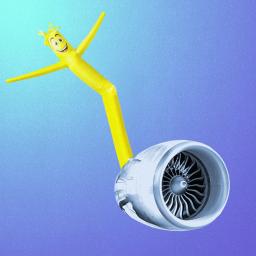 |
by Casey Crownhart on (#6TAA7)
WHO Gevo, LanzaJet, Montana Renewables, Neste, World Energy WHEN Now All the world's planes consumed roughly 100 billion gallons of jet fuel as they crisscrossed the planet in 2024. Only about 0.5% of it was something other than fossil fuel. That could soon change. Alternative jet fuels could slash aviation emissions-which have caused about 4%...
|
 |
by James O'Donnell on (#6TAA6)
WHO Agility, Amazon, Covariant, Robust, Toyota Research Institute WHEN Now Generative AI is causing a paradigm shift in how robots are trained. It's now clear how we might finally build the sort of truly capable robots that have for decades remained the stuff of science fiction. Robotics researchers are no strangers to artificial intelligence-it has...
|
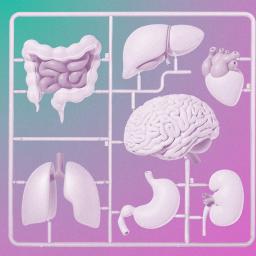 |
by Antonio Regalado on (#6TAA5)
WHO California Institute for Regenerative Medicine, Neurona Therapeutics, Vertex Pharmaceuticals WHEN 5 years A quarter-century ago, researchers isolated powerful stem cells from embryos created through in vitro fertilization. These cells, theoretically able to morph into any tissue in the human body, promised a medical revolution. Think: replacement parts for whatever ails you. But stem-cell science...
|
 |
by Rhiannon Williams on (#6TAA4)
WHO Baidu, Pony AI, Waymo, Wayve, Zoox WHEN Now If you live in certain cities in America or China, you've probably spotted driverless cars dropping off passengers. Perhaps you've even ridden in one yourself. That's a radical change from even three years ago, when these services were still learning the rules of the road. And...
|
 |
by Bryn Nelson on (#6TA8B)
A new industrial facility in suburban Seattle is giving off a whiff of futuristic technology. It can safely treat fecal waste from people and livestock while recycling nutrients that are crucial for agriculture but in increasingly short supply across the nation's farmlands. Within the 2.3-acre plant, which smells lightly of ammonia, giant rotating spindles turn...
|
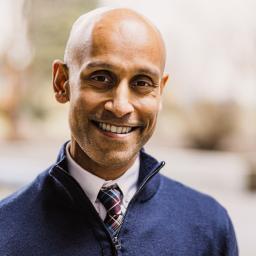 |
by Simon Spichak on (#6TA6S)
Each year, about half a million Americans are diagnosed with Clostridioides difficile, a common bacterial infection of the large intestine. Only some patients respond to antibiotics. Infection recurs in about 20% of patients and proves fatal in about 30,000 cases annually. But there is a highly effective, albeit unconventional, treatment: fecal microbiota transplantation (FMT), which...
|
 |
by Rhiannon Williams on (#6T9M1)
This is today's edition ofThe Download,our weekday newsletter that provides a daily dose of what's going on in the world of technology. The biggest AI flops of 2024 The past 12 months have been undeniably busy for those working in AI. There have been more successful product launches than we can count, and even Nobel...
|
 |
by Sofia Quaglia on (#6T9G1)
Inhabitants of the Marshall Islands-a chain of coral atolls in the center of the Pacific Ocean-rely on sea transportation for almost everything: moving people from one island to another, importing daily necessities from faraway nations, and exporting their local produce. For millennia they sailed largely in canoes, but much of their seafaring movement today involves...
|
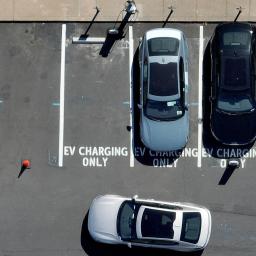 |
by James Temple on (#6T9EX)
MIT Technology Review's What's Next series looks across industries, trends, and technologies to give you a first look at the future. You can read the rest of them here. It looks as though 2025 will be a solid year for electric vehicles-at least outside the United States, where sales will depend on the incoming administration's...
|
 |
by Adam Mann on (#6T8YS)
High atop Chile's 2,700-meter Cerro Pachon, the air is clear and dry, leaving few clouds to block the beautiful view of the stars. It's here that the Vera C. Rubin Observatory will soon use a car-size 3,200-megapixel digital camera-the largest ever built-to produce a new map of the entire night sky every three days. Generating...
|
 |
by Rhiannon Williams on (#6T8N7)
The past 12 months have been undeniably busy for those working in AI. There have been more successful product launches than we can count, and even Nobel Prizes. But it hasn't always been smooth sailing. AI is an unpredictable technology, and the increasing availability of generative models has led people to test their limits in...
|
 |
by The Editors on (#6T8DN)
Separating AI reality from hyped-up fiction isn't always easy. That's why we've created the AI Hype Index-a simple, at-a-glance summary of everything you need to know about the state of the industry. More than 70 countries went to the polls in 2024. The good news is that this year of global elections turned out to...
|
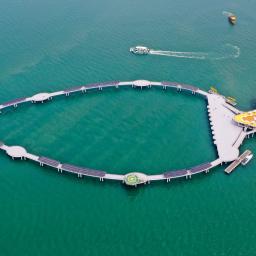 |
by Matthew Ponsford on (#6T7Q1)
A short ferry ride from the port city of Yantai, on the northeast coast of China, sits Genghai No.1, a 12,000-metric-ton ring of oil-rig-style steel platforms, advertised as a hotel and entertainment complex. On arrival, visitors step onto docks and climb up to reach a strange offshore facility-half cruise ship, half high-tech laboratory, all laid...
|
 |
by Douglas Main on (#6T649)
As of 2023, nearly 2 billion metric tons of it were being produced annually, enough to cover Manhattan in a layer more than 13 feet thick. Making this metal produces a huge amount of carbon dioxide. Overall, steelmaking accounts for around 8% of the world's carbon emissions-one of the largest industrial emitters and far more...
|
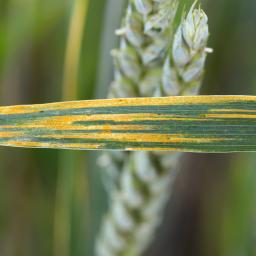 |
by Shaoni Bhattacharya on (#6T5HD)
When Dave Hodson walked through wheat fields in Ethiopia in 2010, it seemed as if everything had been painted yellow. A rust fungus was in the process of infecting about one-third of the country's wheat, and winds had carried its spores far and wide, coating everything in their path. The fields were completely yellow. You'd...
|
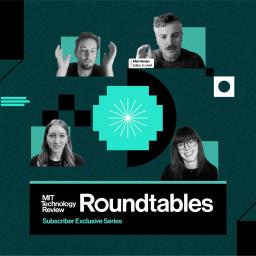 |
by The Editors on (#6T54R)
The worst technologies of 2024. The future of mixed reality. AI's impact on the climate. These are just a few of the topics we covered this year in MIT Technology Review's monthly event series, Roundtables. The series offers a unique opportunity to hear straight from our reporters and editors about what's next for emerging technologies....
|
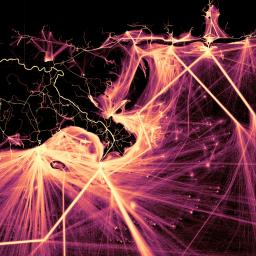 |
by Jon Keegan on (#6T54S)
As we run, drive, bike, and fly, we leave behind telltale marks of our movements on Earth-if you know where to look. Physical tracks, thermal signatures, and chemical traces can reveal where we've been. But another type of trail we leave comes from the radio signals emitted by the cars, planes, trains, and boats we...
|
 |
by James O'Donnell on (#6T4N1)
This story originally appeared in The Algorithm, our weekly newsletter on AI. To get stories like this in your inbox first, sign up here. Here's a question. Imagine that, for $15,000, you could purchase a robot to pitch in with all the mundane tasks in your household. The catch (aside from the price tag) is...
|
 |
by Abby Ivory-Ganja on (#6T4N2)
Another year is coming to a close, so let's look back at the MIT Technology Review stories that resonated most with you, our readers. We published hundreds of stories in 2024, about AI, climate tech, biotech, robotics, space, and more. There were six new issues of our magazine, on themes including food, play, and hidden...
|
 |
by Simson Garfinkel ’87, PhD ’05 on (#6T4BF)
We meet in the name of Osiris." With these words, solemnly intoned, members of the MIT Osiris Society began their clandestine meetings for nearly 70 years. Created in 1903 as a senior society" and modeled on both the fraternities of Cornell and the mythology of ancient Egypt, Osiris gave MIT's senior leadership an opportunity to...
|
 |
by Jennifer Chu on (#6T4BE)
Brackish groundwater is a major potential source of drinking water in underserved areas of the world, but desalinating it affordably is a challenge. A new system developed by mechanical engineering professor Amos Winter, Jon Bessette, SM '22, and staff engineer Shane Pratt manages to do the job entirely on solar energy, with no need for...
|
 |
by Peter Dizikes, Anne Trafton on (#6T4BD)
Two MIT professors, an alumnus, and a former postdoc are among the winners of 2024's Nobel Prizes. Professors Daron Acemoglu and Simon Johnson, PhD '89, shared the prize in economics with political scientist James Robinson of the University of Chicago, with whom they have long collaborated. Using evidence from the last 500 years, their work...
|
 |
by Jennifer Chu on (#6T4BC)
Despite increasing evidence that water flowed on Mars billions of years ago, scientists have been mystified by what happened to the thick, carbon dioxide-rich atmosphere that must have once kept that water from freezing. Now two MIT geologists think they know. Geology professor Oliver Jagoutz and Joshua Murray, PhD '24, propose that much of this...
|